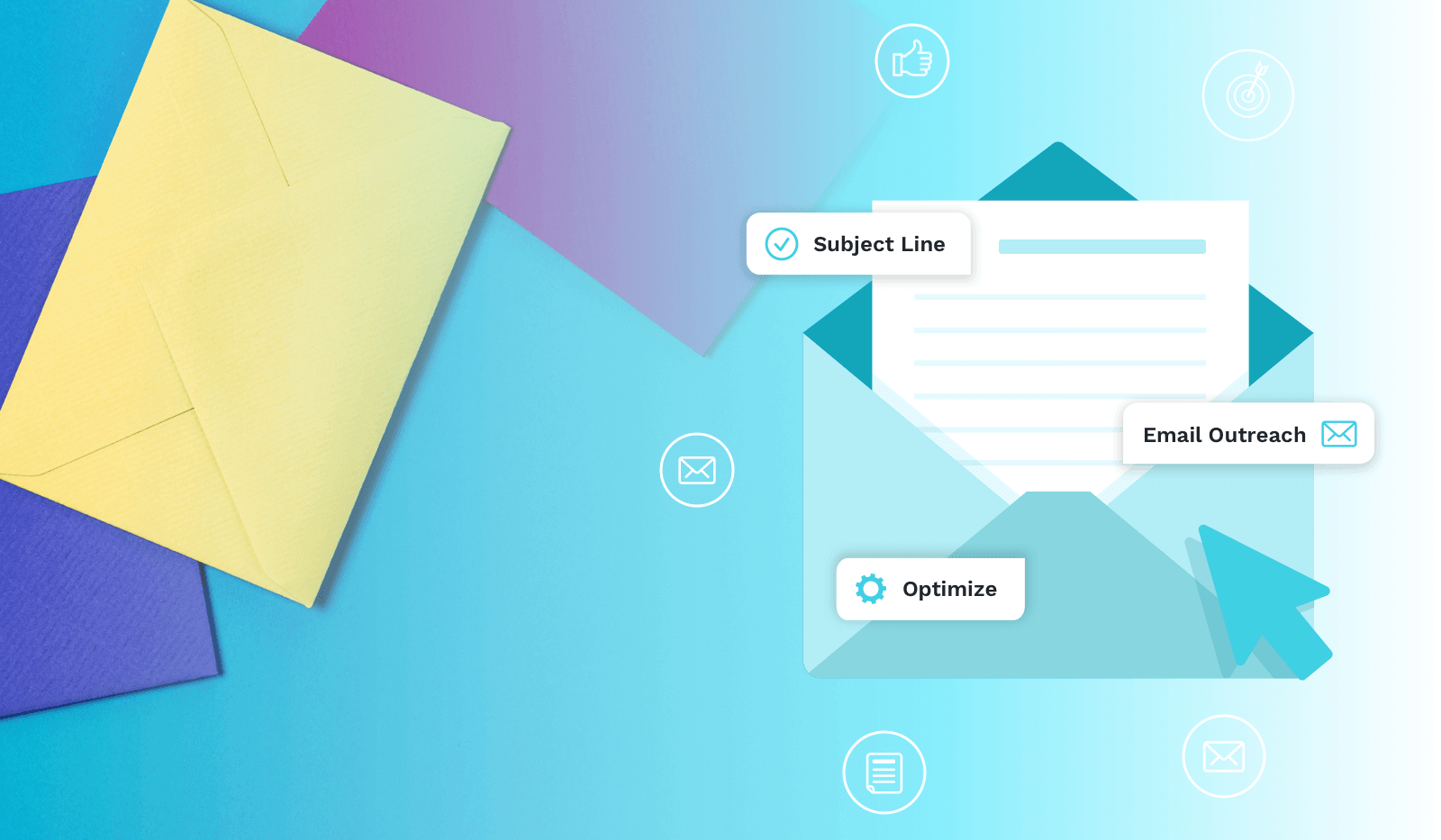Email outreach remains one of the most effective ways to promote your business and sell your product or service. With email outreach, you can quickly connect with hundreds, thousands, or even millions of leads. However, it’s not as simple as sending out an email and immediately getting every lead to visit your website or buy your product or service. It all starts with the optimized subject line.
Every business now uses email outreach in their promotional and sales efforts. This means that the competition is high and most of the tactics have already been tried and tested. On top of that, so many businesses have been abusing email outreach over the past years. So much so, that consumers are now more likely to skip an email that doesn’t interest them.
So, if you want to stand out you need to offer what your leads are looking for. Get their attention at the right time and with the right solution.
To see how successful your email campaign was you should track open and click through rate.
On average open rate is around 15-20%, depending on the industry, and only 2-3% of those will actually click on a link in the email. Your goal is to hit these numbers or even exceed them.
If you build your email list with 1,000 subscribers, by increasing CTR (click through rate) by only 1%, you get another 10 potential clients. So, how can you get more people to open your emails? The answer is writing better subject lines. Here’s how.
1. Keep Your Subject Lines Short
For starters, optimize your email subject lines by keeping them short.
When people open their inboxes, they often just skim through their unread emails and look for anything that’s important. If your email subject line is too long, chances are your recipients won’t even get to the end before moving to another unread email.
But there’s also a practical reason to keep subject lines short. Many people are reading their emails on mobile devices. Long subject lines will get cut off, and your customer won’t even be able to see the end of it. You’re unlikely to get someone to open your email if they can’t even read the entire subject line.
Examples:
“Thanks for joining – here’s what we have on sale” VS “Thank you for joining our mailing list – here’s what we have on sale this week.”
“These 4 tips can improve your business right away” VS “ Here are 4 tips you can use to improve your business starting this week”
2. Make The Subject Lines Personal
Next, optimize subject lines with personalization. Your goal is to establish a connection with the person receiving the email, and this is easier to do if you add a personal touch to it. There are two ways you can do this.
One option is to use their first name in the subject line. For example, “Hi, Bob – Here’s a Special Offer Just for You!” or “Happy Birthday! Here’s a Special Gift from Us”. Messages like this will work better than something like “Here’s a Special Offer”.
Another option is to use your point out that you already talked in the past. For example, if you recently met the person at a conference, you could mention that in your email subject – “Hi Bob, We Met at the Marketing Conference Last Week”. Or, if you have a mutual connection, you can use that to your advantage – “Hi Bob, Steve Gave Me Your Contact Info”.
Subject lines like this will help you get a higher open and reply rate.
3. Add Some Urgency or Curiosity
The next strategy you can try is to add a sense of urgency or curiosity to your subject lines.
Let’s look at an example of adding urgency first.
Imagine receiving two emails. The first one has a subject of “We’re Offering 25 Percent Off” while the second said, “Our 25 Percent Off Deal Ends Tonight.” Which one are you more likely to open up right away?
Also, try to pique their curiosity. Here is an example. The first email subject says “We’re Offering 25 Percent Off” while the second says “You Won’t Believe the Deal We’re Offering”. With the second subject line, your likely to get your recipients curious about the deal you’re offering. Getting your leads to open an email is just half of the battle. Sometimes adding just a little bit of mystery can be enough of a nudge to get them to open your email.
Some examples:
“Act now to receive our biggest discount of the year”
“Spots are filling up fast – join our exclusive membership site today”
“Did you hear what our CEO said in The New York Times?”
“We’ve completely changed our product – come take a look”
4. Be Genuine
Avoid tricks and false promises in subject lines.
If you trick your recipients into opening your email, it won’t be long before they unsubscribe from your list. You need to build loyalty and trust with your leads, and you can only do this by being genuine.
Don’t make any false promises.
If your email subject line says that you offer a discount, make sure you do provide more details and a discount voucher in the email body. Also, don’t say things like “Urgent Action Required” and then go on to talk about a deal you have ending at midnight. This subject line seems like something bad is going to happen if the recipient doesn’t act, and not that they will miss out on a deal.
Here are the words that you should avoid in your email subject lines:
– Free, Earn money
– Exclusive, For You Only
– Amazing, Fantastic, Unbelievable
– Emojis
These words are so commonly used in spam emails that most consumers are wary of them, and many spam blockers will filter them out. When optimizing email subject lines, stay away from these words or use synonyms.
Building trust with your leads and newsletter subscribers should be your priority, over increasing open rate.
Some good examples are:
“Our best sale to date is live now” VS “We have an AMAZING sale going on right now, and it’s for you only!”
“10 Tips for finding jobs you can do at home” VS “Earn money from home – this unbelievable trick will make you rich!
6. Experiment and Analyze the Data
Finally, to write better outbound email subject lines, you need to test different versions and see what works. Consider A/B testing. With split testing, you’ll send out two emails with similar, but slightly different subject lines. You would then monitor both emails and see which subject line has better open and response rate. This information will help you create better subject lines so your email outreach campaigns are more successful.
To start, try adding different variables. Version A could include the recipient’s name, and version B could include the name of their company. You could also write two completely different subject lines. One creates a sense of urgency and another curiosity, and see which one performs better for a particular campaign.
Conclusion

These are just some suggestions on how to optimize subject lines, but keep in mind that everyone’s audience is different. A subject line that has high open rates for one industry, doesn’t mean it will work and be successful for some other. The best thing you can do is try out a lot of different strategies with A/B testing, analyze your results, refine your subject line copy and improve your outreach campaign.



